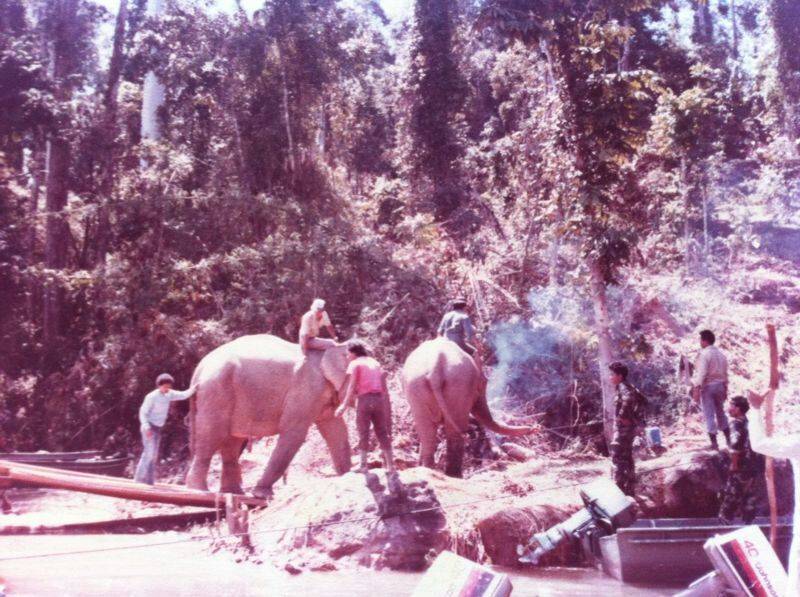 |
OP Gajah – Saving Wild Elephants
(A Civil Action Task by the Malaysian Army Royal Regiment of Engineers for the Conservation of Wild Life to the Nation)
Background
It was towards the end of 1983, when construction of the massive Kenyir Hydro Electricity Dam of Terengganu was near completion. It was also the year-end monsoon season, when heavy rainfall occurred in the vast expanse of the catchment area. Even before the impoundment of the dam proper took place, flooding of the catchment area had taken place, as a result of which numerous islands were formed from the hillocks and surrounding higher grounds of the water way.
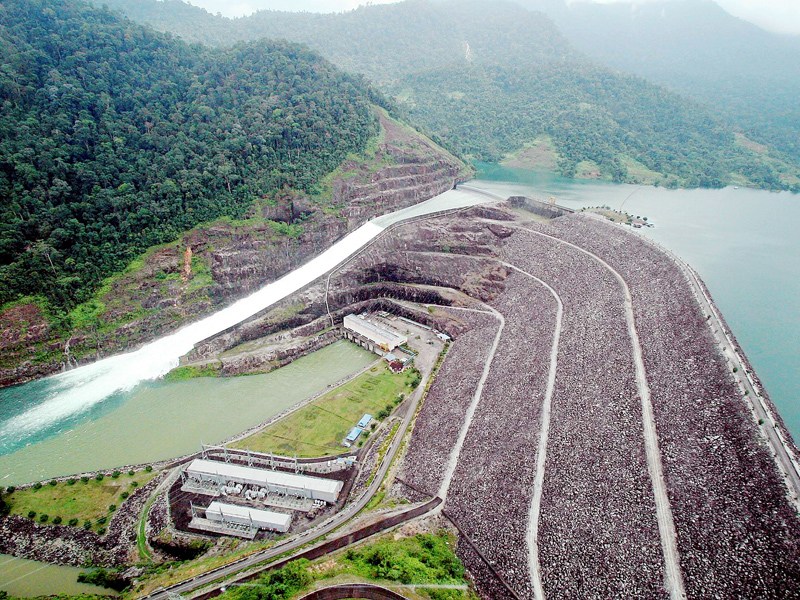 |
It was in this situation that a herd of wild elephants within Kenyir was caught by the rising water, and was stranded on an island about the size of a football field. With the rising water, the island was fast being reduced to half the size of a football field.
National Electricity Board (LLN) personnel who carried out inspection of the flooded area by speed boats encountered the distressing and desperate trumpeting of the elephants. On closer investigation, they found a herd of elephants stranded on the island.
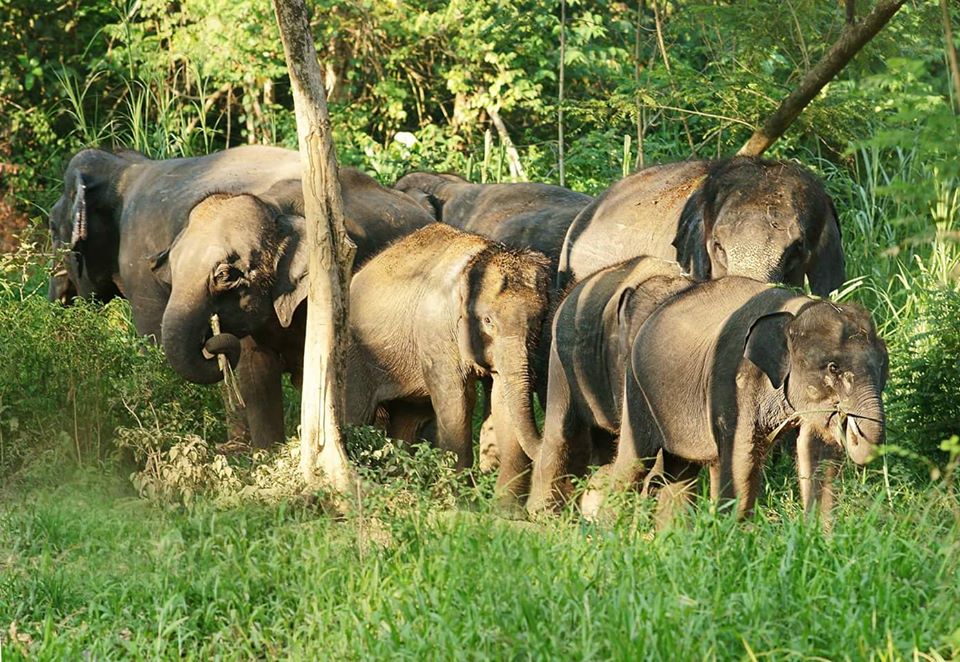 |
It is noted that elephants can swim or float. They can do so if there is water current or movement, to enable them to swim to the desired location. In the case of Kenyir, the vast expanse is one piece of calm water. The Wild Life Department based in Temerloh was alerted, to rescue these stranded elephants. Based on their advice, these elephants must be physically relocated to the mainland reserve. They had concluded that these elephants would not be able to swim on their own to higher ground, as they were disorientated by the rising water. They therefore contacted the Military Brigade concerned in Kuantan, and it was decided that the Army would carry out this rescue mission.
The Malaysian Army Royal Regiment of Engineers was assigned to this task, as bridging and rafting across water obstacles is one their tasks.
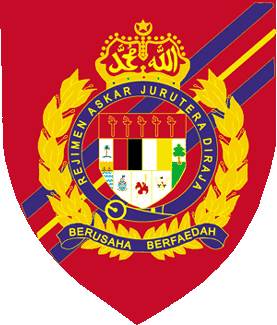 |
Rescue Mission
The task was assigned to 2nd Engineers Squadron under the command of Maj Tang Yew Kai (Rtd), with No. 1 Troop being tasked to study, plan and execute this task of relocating the elephants. The troop was under the command of Lt Adenan (Rtd) with Lt Ng Thim Fook (Rtd) as the troop officer.
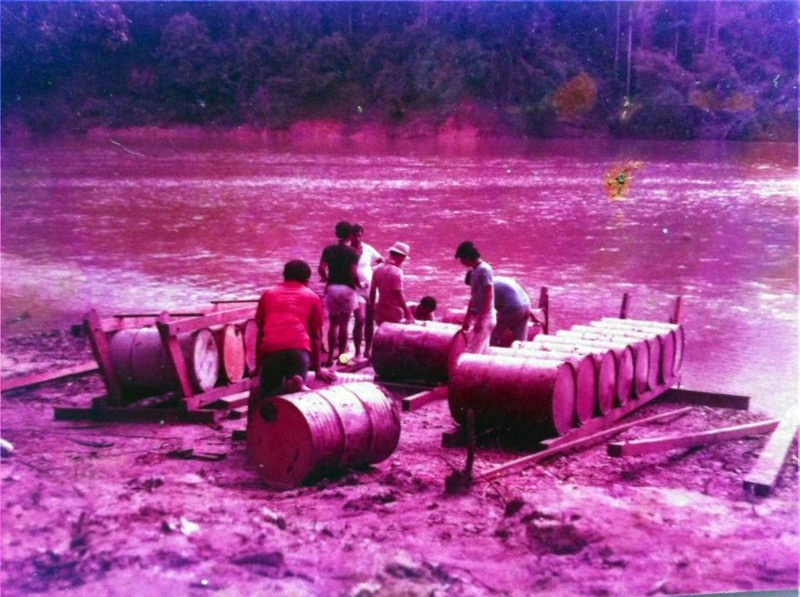 |
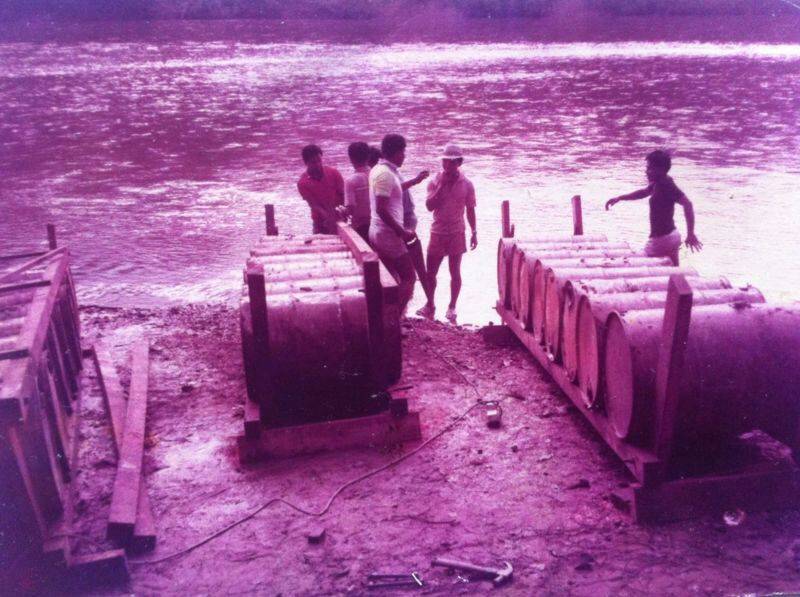 |
A detailed reconnaissance of the task was carried out. It was decided that a 40 ft x 40 ft raft was required. Floatation was by 44-gallon oil drums, properly secured, and complemented by timber decking strong enough to take the weight of the biggest size elephant, which was estimated to weigh as much as a laden Army 3-ton truck. 4 assault boats were secured to the raft, with each boat mounted with a 40 HP outboard motors to provide propulsion. The purpose of the raft was also to ferry 2 trained elephants with mahouts, to coax and pacify their wild cousins for the relocation operation. It must be noted that chains properly secured to the bastions of the raft were also incorporated, to secure these elephants.
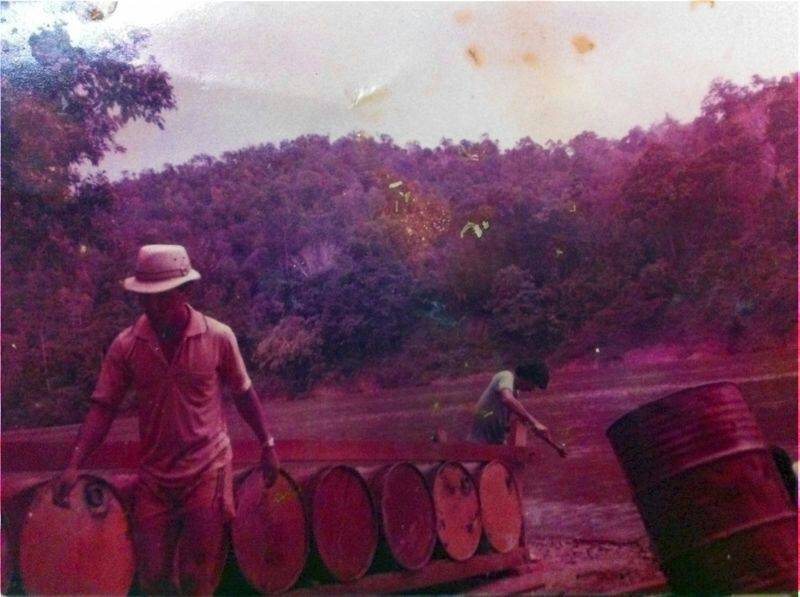 |
The logistics involved in the construction of this raft was massive, as all construction materials had to be transported to the site, and the raft had to be constructed in situ. It took 2 weeks for the raft to be constructed. It was test run and found fit for task.
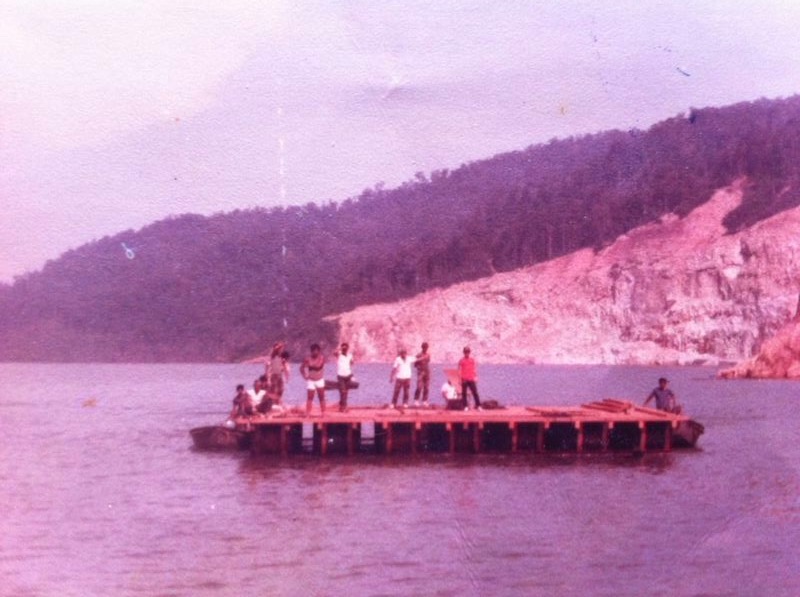 |
Kenyir dam was a massive catchment of water. The route from the launching point of the raft to the elephant’s island was littered with submerged trees, branches and other vegetation’s. This had to be cleared to enable the raft to sail safely. As there were no mechanical excavators available, these obstacles had to be cleared by explosive. The same problem was encountered at the landing point of the elephant island, as well as the release point on the mainland, which had all these obstacles. Under-water demolition by explosive was carried out to clear all these obstacles. The Engineer divers faced this challenging task. The landing and releasing points were more crucial, as the raft had to be properly landed, to enable the elephants to be safely moved.
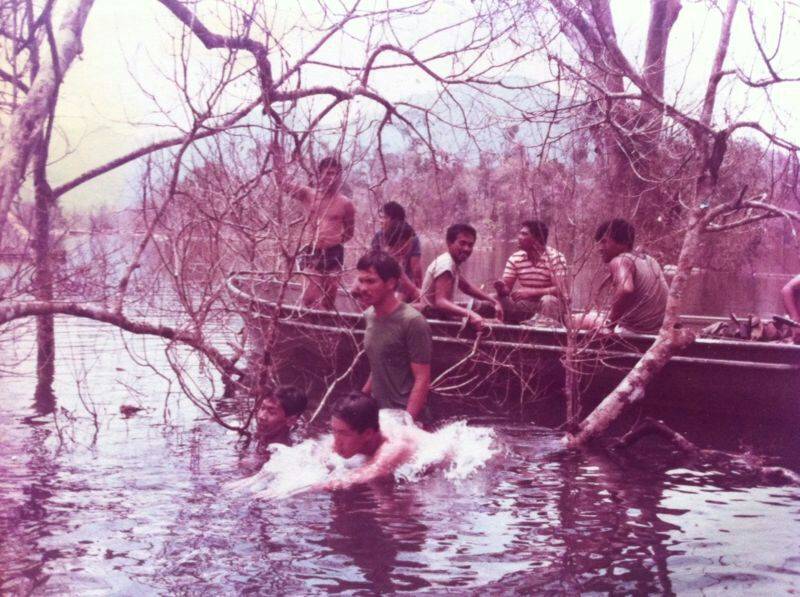 |
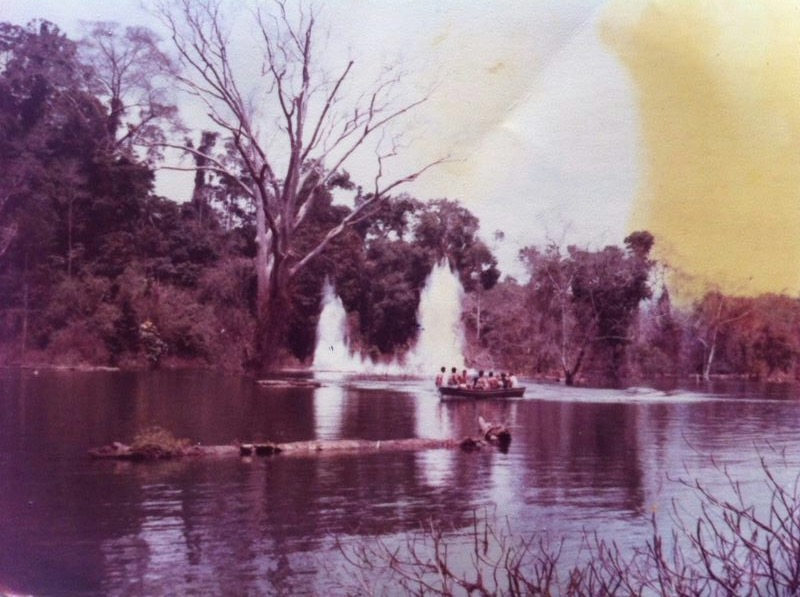 |
The operation was carried out by the Wild Life department personnel, assisted by the Engineers. These personnel tracked and tranquilised the elephants, one at a time. The trained elephants with their mahouts, secured, coaxed and dragged each elephants to the raft. Each elephant was properly secured by chain and shackled to the raft before transportation began. The raft ferried each elephant, escorted by the trained elephants and mahouts to the release point on the mainland, a journey which took about 30 minutes. The tranquilised elephants were coaxed to leave the raft when they regained consciousness, escorted by the trained elephants. A total of 13 wild elephants were captured, secured and relocated to higher ground on the mainland.
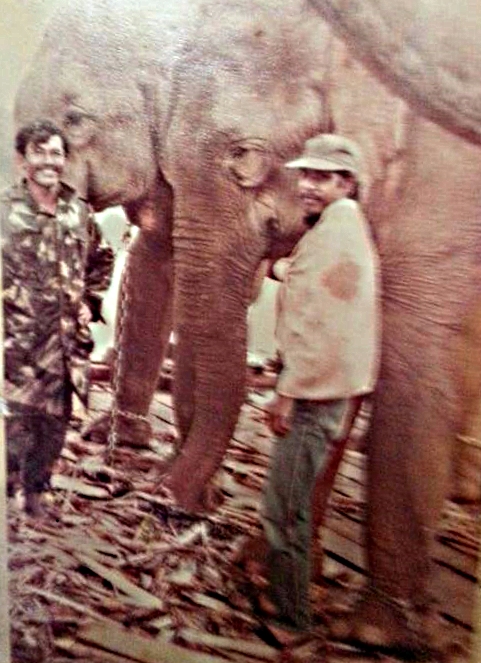 |
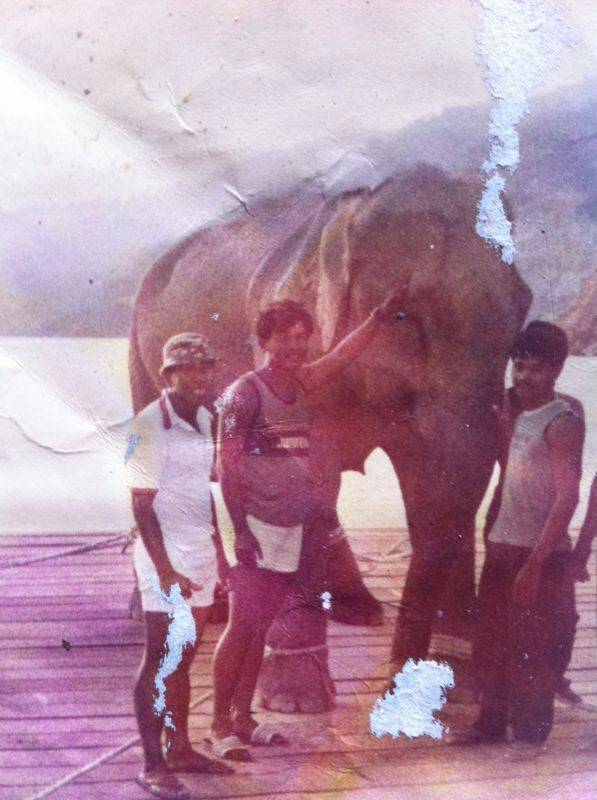 |
It must be pointed out that while rafting took place, there was always the constant danger of rampage by these animals, even though they were tranquilised. It would be a disaster situation if this happened. The other point of interest was that even the trained elephants showed signs of stress, and they plainly refused to work at times. This was a challenging task to the mahouts, as well as the Engineers who manned the raft.
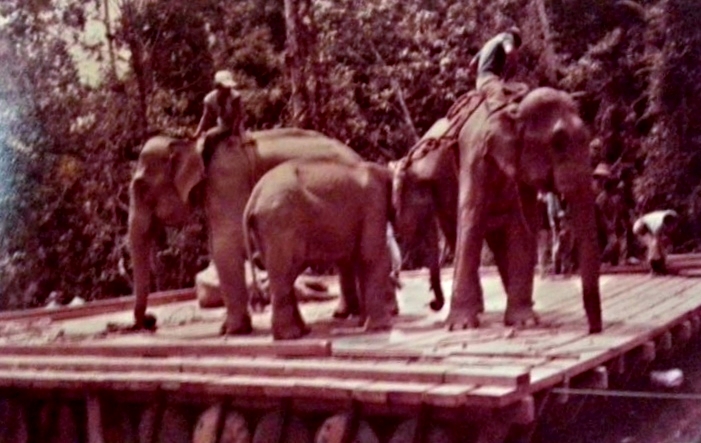 |
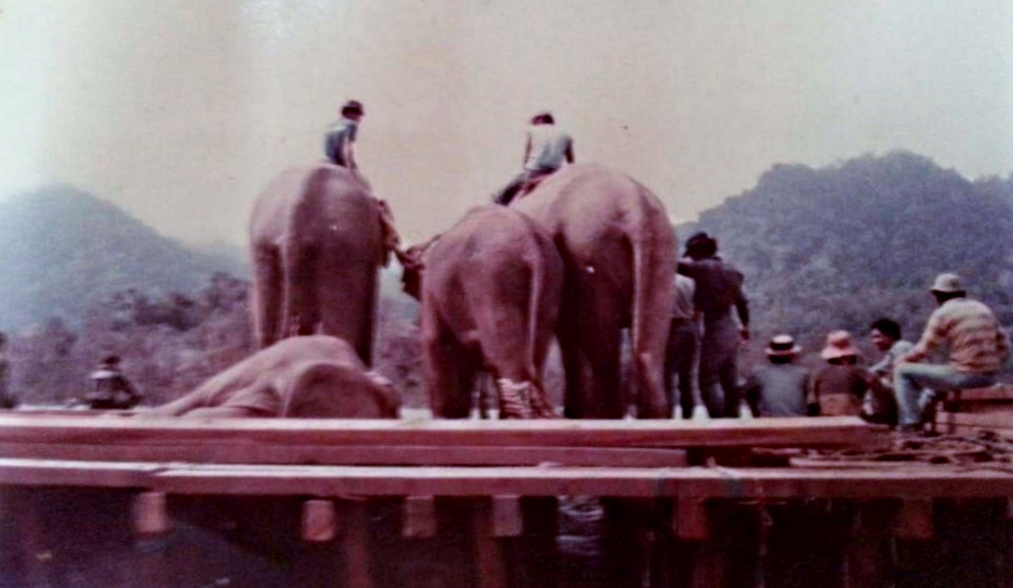 |
It was a very successful operation, which took 2 months to complete. 13 wild elephants were saved. Lt Adenan (Rtd) and Lt Ng Thim Fook (Rtd) were bestowed with the Pingat Jasa Kerajaan (PJK) medal by the State of Trengganu for this civic task.
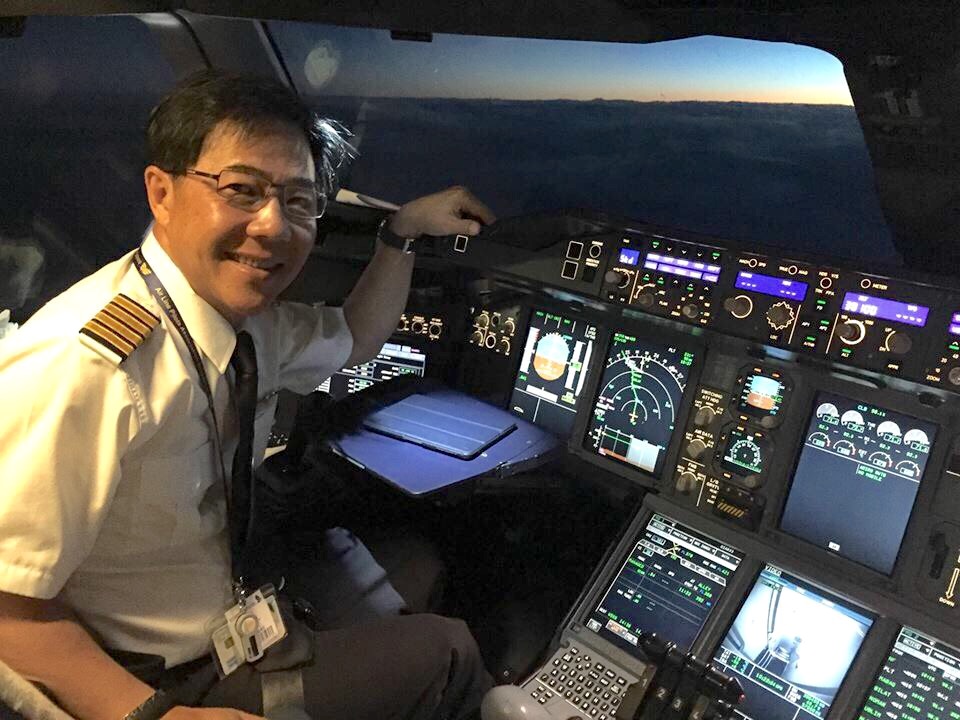 |
Lt Ng Thim Fook (Rtd) had a free hand in the entire rescue operation where he designed the rescue raft and built it with his men. He served in the Regiment of Engineers from 1981 to 1988. He left the service as a Captain, joined Singapore Airlines in 1988 and was trained as a Pilot. He is currently a Captain on the Airbus A380 aircraft and the President of the Air Line Pilots Association.
Written by:-
Maj Foo Ah Cheng (Rtd)
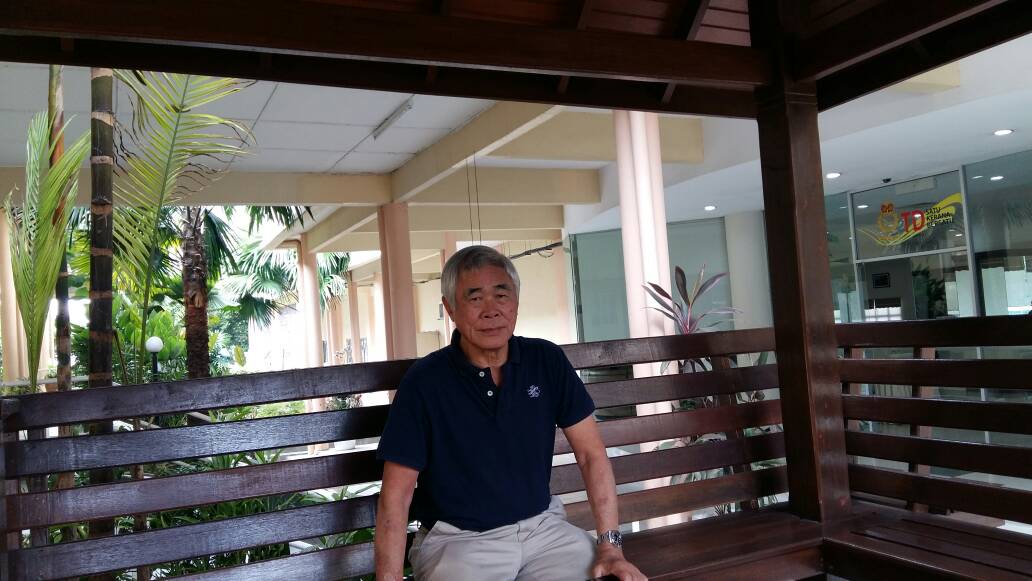 |
Compiled by:-
Maj Wong Kwai Yinn (Rtd)
9 Mar 18
Pictures:
Op Gajah Kenyir 1983 pictures courtesy of Captain Ng Thim Fook.